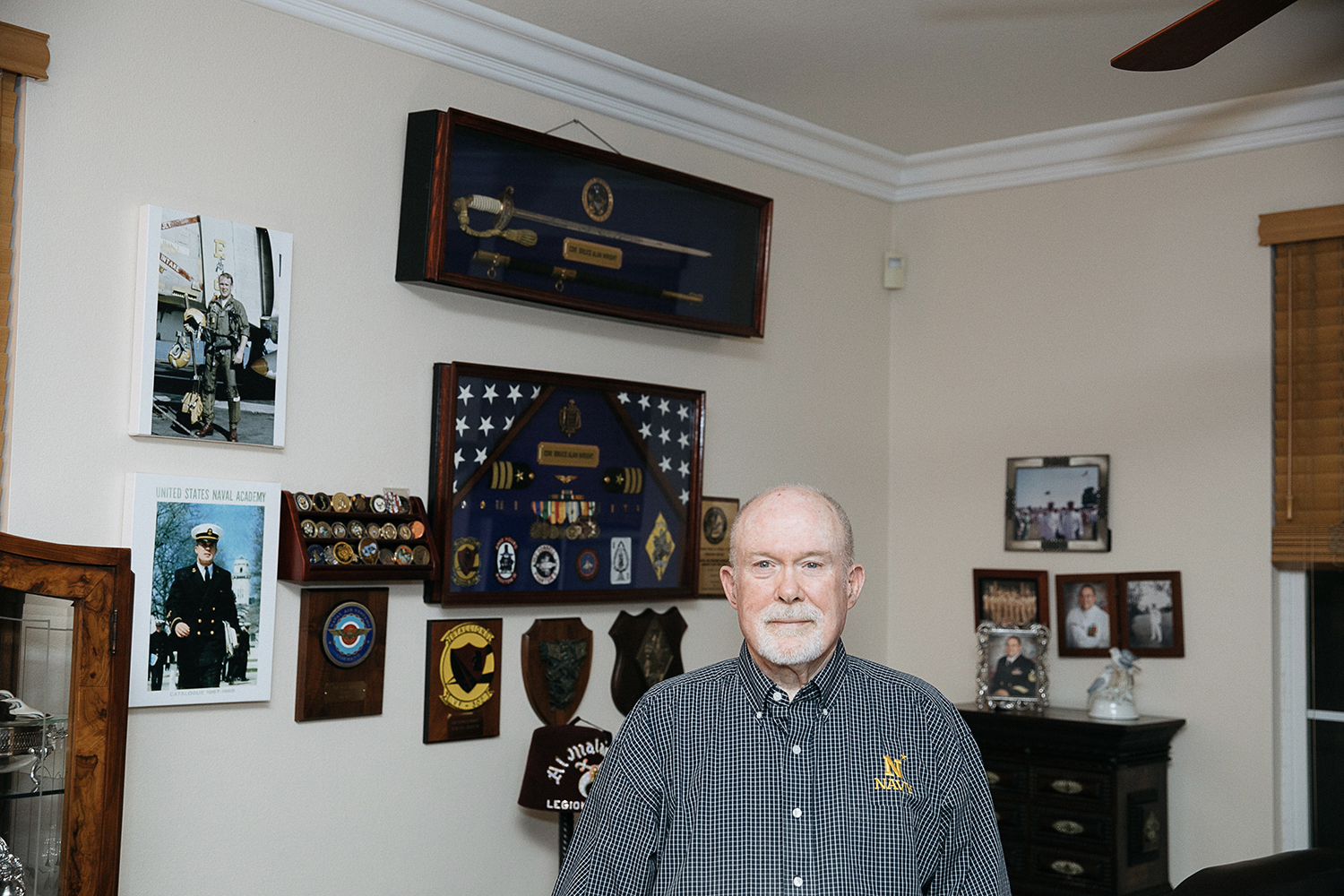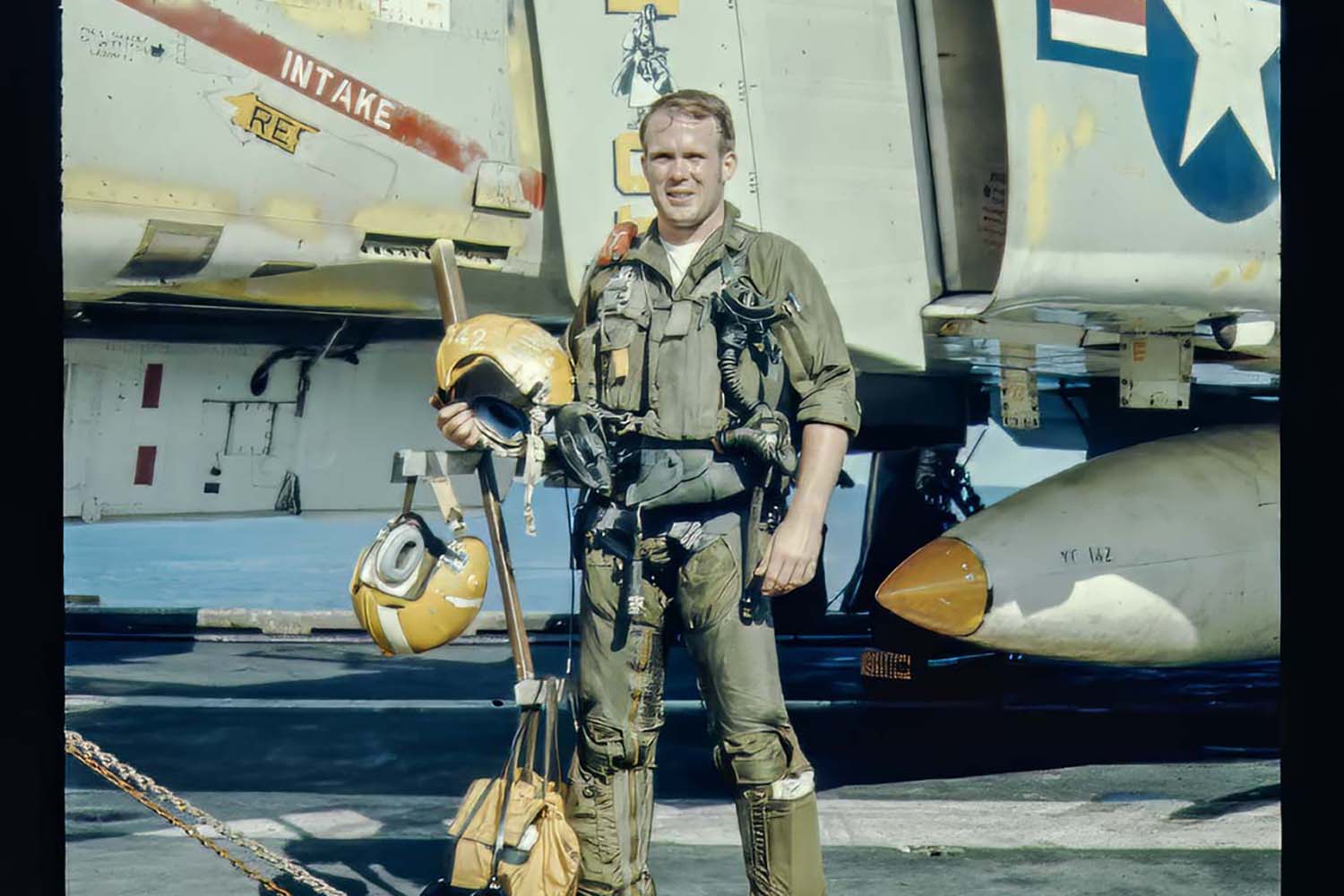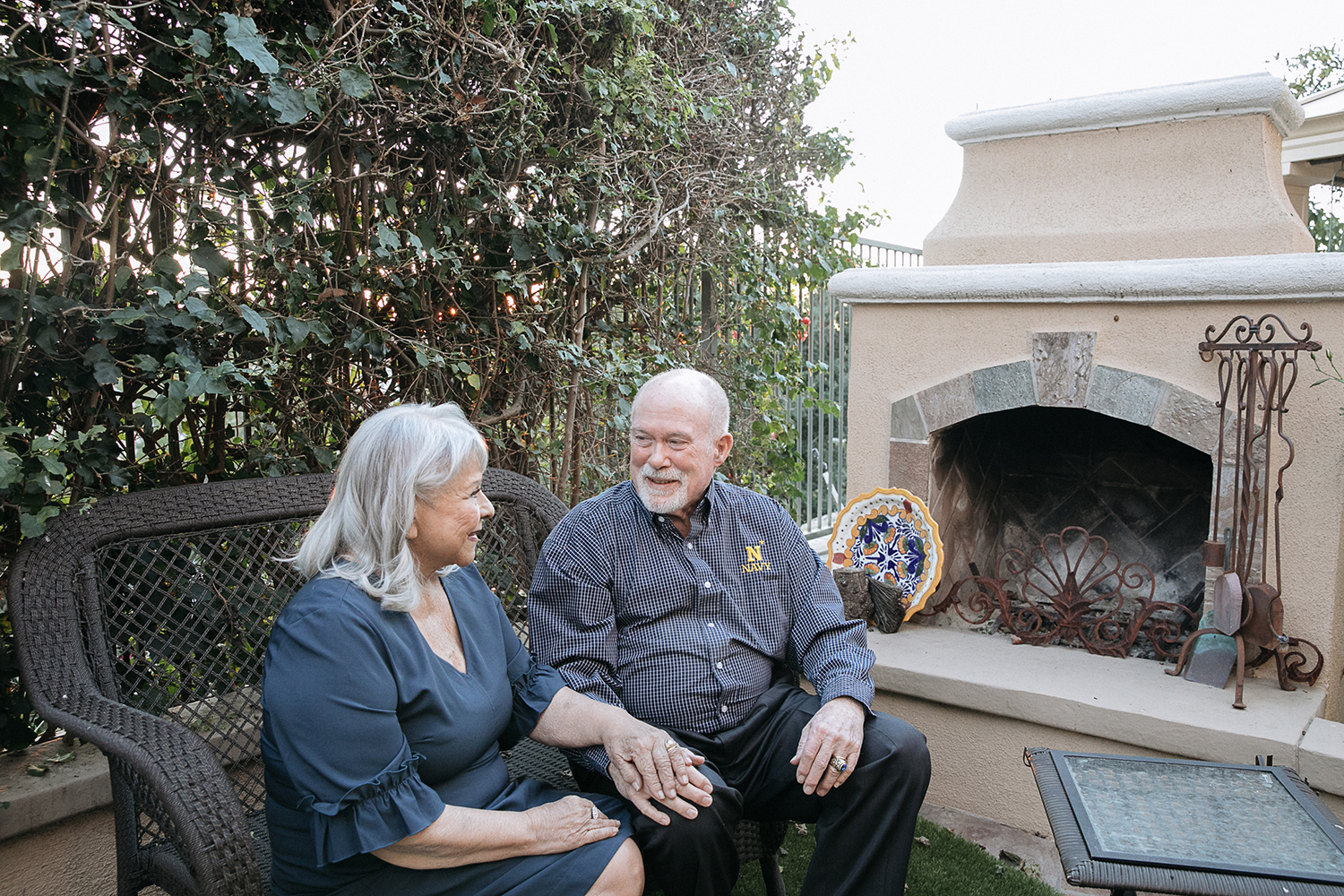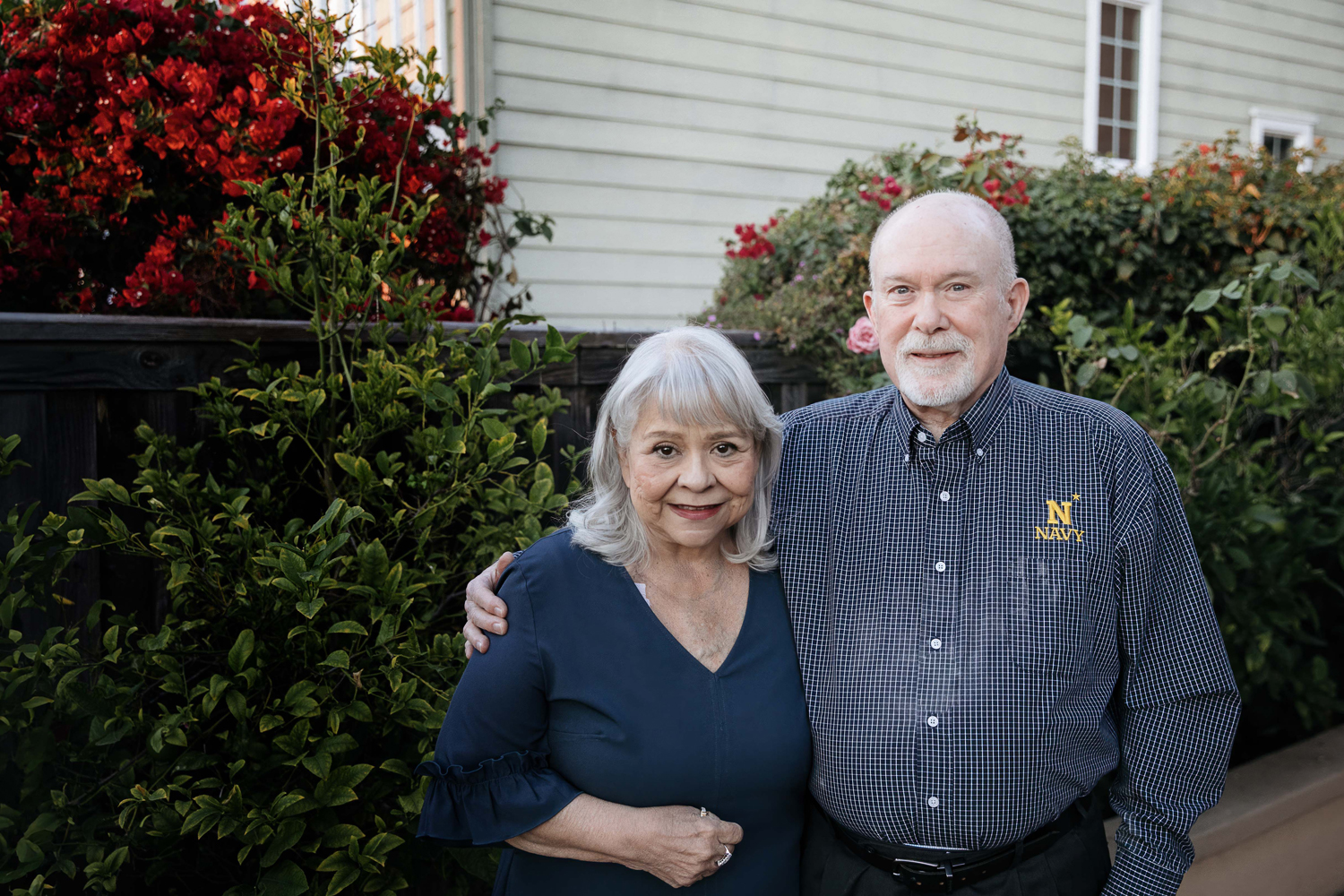ONE DAY IN 2009, Bruce Wright was sitting in the American Legion post in Newport Beach, California, enjoying the harbor view when a representative of the U.S. Department of Veterans Affairs (VA), there to educate veterans, asked if he had a few minutes to chat. After learning about Wright’s three wartime deployments to Vietnam, the VA representative told Wright, a retired U.S. Navy commander, that he might have been exposed to Agent Orange, a chemical herbicide used in Vietnam that has been linked to long-term health problems, including cancer. The representative recommended Wright sign up for a free Agent Orange Registry health exam conducted by the VA that would alert him to health problems that might be related to exposure to the defoliant.
That’s how Wright, then 64, learned he had two forms of cancer linked to Agent Orange exposure—prostate cancer and a type of blood cancer called chronic lymphocytic leukemia (CLL) that Wright had never heard of. “Google it,” the VA doctor told him.
In 2009, about 12% of people with CLL died from the disease within five years, and Wright didn’t want to join them. (With treatment advancements, that number has dwindled to 8%.) He set out to learn everything he could about his disease and to pursue the veterans’ benefits owed him for his service. “It was a road filled with many questions, few answers and lots of persistence,” recalls Elaine Wright, his wife and caregiver. Today, after two rounds of CLL treatment and successfully securing his disability benefits, Bruce Wright helps veterans and others with CLL as a patient advocate and educator.
An Uncertain Exposure
CLL starts in the bone marrow, the spongy tissue inside of bones that produces white blood cells to fight infection. In people with CLL, the body makes abnormal B lymphocytes—a type of white blood cell. These abnormal cells aren’t as good at fighting infection as their normal B cell counterparts. The abnormal cells also don’t die when they should, which means they build up in the bone marrow over time and crowd out healthy blood cells.
CLL is typically slow growing. It’s often found when a routine blood test detects too many white blood cells—sometimes years before symptoms arise or treatment is needed. CLL is a common form of adult leukemia, yet it’s still relatively rare—the average person’s lifetime risk of CLL is about one in 175. Mutations in genes that control the growth of white blood cells can increase the risk of CLL, and exposure to Agent Orange, as well as chemical pesticides and radon, can increase the risk of these mutations and lead to CLL.
Wright could have been exposed to Agent Orange in a number of places. He first set foot in Vietnam at Da Nang Air Base, where Agent Orange was stored, in 1968. From 1971 to 1973, Wright, the pilot of an F-4J Phantom II jet, flew several missions in Vietnam and Thailand, making stops at bases in areas where Agent Orange had been used. Between missions, he was stationed on the aircraft carrier USS Enterprise off the coast of Vietnam. The U.S. government now acknowledges that Agent Orange may have contaminated potable water aboard some Navy ships.

Bruce Wright is surrounded by medals and memorabilia from his long Navy career. Photo by Morgan Shidler
Symptoms of CLL include enlarged lymph nodes, extreme fatigue, frequent infections, night sweats and weight loss. Wright, who retired from the Navy in 1992 and worked as a civilian in military aerospace at the time of his diagnosis in 2009, was asymptomatic. His doctor at the Tibor Rubin VA Medical Center in Long Beach, California, suggested watchful waiting—a common approach to CLL in its early stages. For Wright, that meant a blood test every 90 days to monitor disease progression. In the meantime, in 2011, Wright underwent brachytherapy, a type of radiation therapy to treat his prostate cancer and achieved remission from prostate cancer in 2012. But he knew he would eventually need treatment for CLL and started learning as much as he could about his blood cancer.
“I had to turn over every rock. I had to own my own disease,” he says.
Watch and Wait
Wright embraced a “can-do” spirit early in his military training as a midshipman at the U.S. Naval Academy in Annapolis, Maryland. “You can do whatever you are tasked to do. It became my mantra,” says Wright, who served as a gunnery officer aboard the destroyer USS Turner Joy on his first deployment to Vietnam in 1968.
Later, as a fighter pilot in the Navy’s elite TOPGUN program, Wright meticulously studied what it would take to keep his aircraft flying and how to get back home if it were damaged. “I developed a slight obsession with learning everything I could,” he remembers. He displayed that same spirit as he delved into learning about his CLL.

In 1971, Bruce Wright stands in front of an F4J Phantom II jet on the deck of the aircraft carrier USS Enterprise. Photo courtesy of Bruce Wright
Wright joined his first online support group for people with CLL in 2010. There he learned that the treatment landscape was shifting. Therapeutic advances meant that patients with CLL were living longer. New medications could target specific cancer pathways with less damage to healthy cells, leaving patients with more treatment options and fewer side effects. At the same time, doctors started to recognize genetic differences between the leukemia cells of different patients. These differences could help to predict which medications or treatment regimens might be most effective for a particular patient.
Although usually not curable, living with CLL has become more manageable in the past decade. “Newer targeted therapies are being investigated and additional targets are being identified,” says hematologist and CLL specialist Thomas Kipps at the University of California, San Diego, Moores Cancer Center, who is Bruce Wright’s treating physician. That’s an exciting development, according to Kipps, because for many patients, it means they can expect to have a normal life expectancy with the disease.
One of the online support groups that Wright joined began meeting regularly in people’s homes in Orange County, California, where the Wrights lived in Ladera Ranch. The group members saw a clear need for patient educational resources on CLL. Advances in medicine were rapidly changing the way CLL could be treated, but many CLL patients still received outdated information and suboptimal care. Members of the original support group founded the CLL Society in 2013. Their goal was to provide support and make cutting-edge treatment information available to all CLL patients and caregivers. The CLL Society now serves tens of thousands of CLL patients and caregivers around the world.
Hematologists often deal with several forms of cancer. Seeing one who specializes in CLL can be key to getting quality care.
Chronic lymphocytic leukemia (CLL) accounts for about one-quarter of new leukemia cases and is a common form of adult blood cancer. According to the CLL Society, limited access to CLL experts is still a major barrier to getting quality care. Hematologists and hematologist-oncologists are tasked with treating several forms of cancer as well as other blood disorders. With the treatment landscape shifting so rapidly, it’s difficult even for blood cancer experts to stay up to date with the newest treatment advances.
What is CLL survivor Bruce Wright’s best advice for CLL patients? “Get yourself to a CLL specialist,” he says. While there are currently no set criteria for who qualifies as a CLL expert, the CLL Society offers a directory of CLL doctors on its website. The CLL Society also offers Expert Access, a program that provides a free online consultation with a CLL expert.
In 2014, Wright started to experience “profound fatigue,” as he describes it, and knew he would need treatment for his CLL soon. Wright and Elaine, his wife, elected to seek care for him from Kipps, one of the top CLL specialists in California. They felt Kipps could give Wright the best possible chance of long-term remission and survival. But there was a problem—Kipps’ office was not taking new patients.
Elaine, who worked for years as a medical office manager, felt she could convince Kipps to accept her husband as a patient if she could just speak with him in person. She and her husband drove an hour from their home in Ladera Ranch to La Jolla, a section of San Diego, where Kipps was leading a seminar on CLL. After the seminar, Elaine joined dozens of researchers and physicians at the front of the auditorium waiting to speak with Kipps. When she got her chance, she said, “My husband has CLL. You have a closed practice. Can you help us?” Kipps said yes.

Bruce Wright relaxes with his wife, Elaine, outside their home. Photo by Morgan Shidler
A Personalized Treatment
A bone marrow biopsy of Wright showed 90% leukemia cells. Wright also had a FISH (fluorescence in situ hybridization) test, which looks for chromosomal abnormalities in cancer cells.
“Understanding the genetic differences between the leukemia cells of different patients can help us to avoid treatments that might not be effective,” says Kipps. If a medication disarms certain proteins on the surface of a cancer cell, but your cancer cells don’t make those proteins, the medication won’t help you, he explains.
In 2014, based on the results of Wright’s FISH test, Kipps put him on a six-month protocol with a newly approved drug called Gazyva (obinutuzumab), a monoclonal antibody. Gazyva targets specific proteins on the surface of B lymphocytes, triggering the body’s immune system to kill cancer cells. Gazyva was approved to treat CLL in 2013 in combination with a chemotherapy drug called chlorambucil. However, Wright received Gazyva without chlorambucil because research was beginning to show that patients could achieve remission with Gazyva alone, without the added toxicity of chemotherapy.
Wright experienced one very serious and frightening infusion-related reaction in which Elaine says that he appeared to be choking. “It felt like an elephant sat down on my chest, and I was going to pass out,” remembers Wright. The reaction stopped when his medical team stopped the infusion. He had no problems finishing the infusion the following day and experienced mostly mild side effects throughout the rest of treatment. After six months, tests showed minimal residual disease in his body, meaning only a small number of leukemia cells could be detected. Wright’s CLL was in remission.
It stayed that way for seven years. In 2021, Wright found out through routine blood testing that abnormal white blood cells were once again proliferating in his bone marrow. He needed another round of treatment, and because he had achieved a long remission with Gazyva the first time, Kipps decided to treat Wright again with the same regimen.
Wright’s cancer is once more in remission, and he has been active in patient advocacy work. For several years, he has been a CLL Society senior support group adviser, establishing support and education groups across the country. He also chairs the CLL Society’s Patient Advisory Board. Most recently, he has become a caregiver for Elaine, who receives nightly peritoneal dialysis at home after an infection in 2023 caused kidney failure. “She is my caregiver, and now I am hers. We are a unit,” says Wright.
When the Ship Comes In
“Bruce can open doors with his positive attitude,” says Elaine, and that has made him a tremendous resource for other veterans dealing with health problems.
After his cancer diagnoses, Wright sought disability benefits from the VA. In 2003, the VA recognized the link between CLL and exposure to Agent Orange and other herbicides during military service. The VA considers CLL a presumptive condition, meaning military service members exposed to Agent Orange do not need to prove a connection between their disease and their service to receive disability compensation. (Prostate cancer was added as a presumptive condition in 1996.) Yet for reasons that are still unclear to Wright, his initial claim was denied and then lost. He had to submit evidence in writing three times to the claim reviewers. After three years, and hours spent on the telephone, Wright finally received his disability benefits, which include cash payments and no-cost health care and prescription medications, but he saw too many of his fellow veterans give up in frustration. “I made a vow to myself that this should not happen to any veteran,” says Wright.
He now works with veterans who have CLL and other health issues linked to their service to support them as they file disability claims. To date, he’s helped 106 veterans get their benefits. He reminds them that they’re not alone and they have value, and he urges them not to quit when obstacles arise. “He empowers them with his can-do personality,” Elaine says.
All Wright asks in return from the veterans he helps is to let him know when they’ve received their benefits so he can celebrate. “I tell them I’m doing my happy dance, they just can’t see it,” Wright jokes.
“When their ship comes in, they are profoundly grateful,” he explains. “A guy will say, ‘I’m really glad you stayed on me. I’m really glad you kept me going when I wanted to turn away.’ That’s my reward. It’s what keeps me going. I’m 78-and-a-half years old and still making a contribution to humanity. That feels good.”
Cancer Today magazine is free to cancer patients, survivors and caregivers who live in the U.S. Subscribe here to receive four issues per year.





